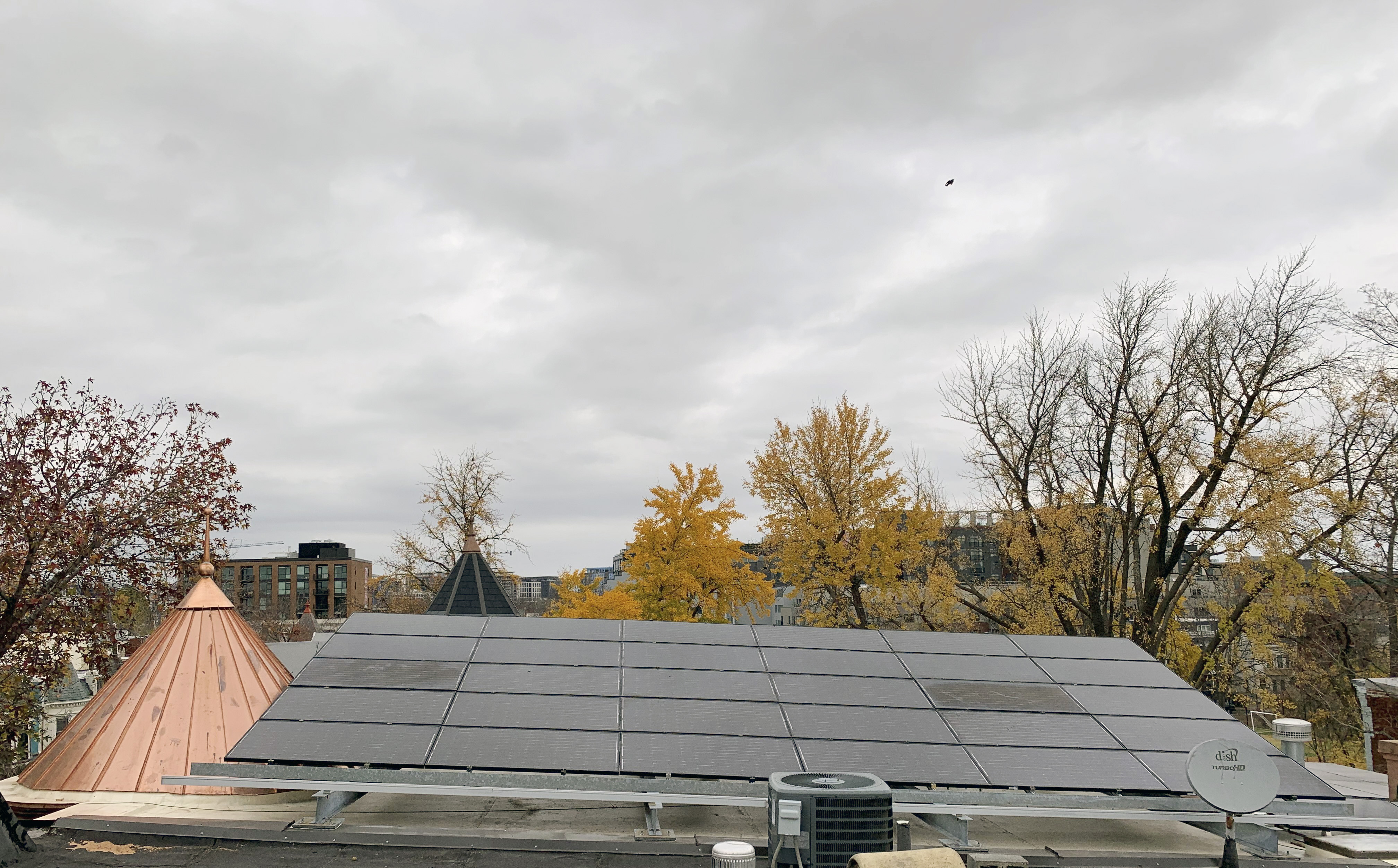Back in 2010, solar energy was not nearly as commonplace for homeowners as it is today. Just over a decade ago, U.S. states were just starting to formulate renewable energy goals and programs that would catapult solar energy growth. It would take early adopters like Sven Shockey of Washington, DC to set the tone for the many households to follow.
May 25, 2022
A decade with Enphase: Sven Shockey

Sven: a pioneer in green building design
Sven is an architect at SmithGroup where he works on large commercial building projects and strives to integrate a high level of sustainability into initial design and construction. He has worked over 25 years on a wide range of projects that have won awards in architecture, historic preservation, sustainability, and planning.
His team is currently designing the Virginia Tech Innovation Campus with a target to achieve LEED Silver or higher (Leadership in Energy and Environmental Design) certification. The building has a unique building-integrated photovoltaic (BIPV) design that incorporates solar modules into the external glass curtainwall and a horizontal shade structure.
In 2010, Sven set out to install solar at his home in the Capitol Hill neighborhood of DC to put his practice into action. He worked with Maryland-based Astrum Solar to install a 6.3-kilowatt solar array using a combination of Schuco and Suntech modules with Enphase M190 microinverters. Like many homeowners today, Sven chose Enphase to maximize system production and track module-level performance.
“Enphase seemed like an up-and-coming company doing interesting work with microinverters,” said Sven. “I thought that knowing the output of every single panel and performance over time was a really good way to go.”
While some installers proposed treated wood beams for the racking across his row home’s roof, Astrum Solar’s design included steel beams that would run from parapet to parapet to support the aluminum racking structure. Sven appreciated the high quality design and knew it would last for the long haul.
The company also included some clauses in the contract that reduced the risk for Sven, including the ability to remove and replace the system when he recovered his roof. They also provided a zero-interest loan to cover the time it would take DC to pay out its solar rebate.
A quick payback in DC
Like homeowners in DC today, Sven was able to leverage federal and local incentives to lower the upfront cost of his solar installation. The federal solar investment tax credit (ITC) and a rebate from the District of Columbia Department of Energy & Environment (DOEE) combined to cover about two-thirds of the upfront cost. He would then benefit from a lower electricity bill to Pepco and an annual check for the value of his solar renewable energy credits (SRECs).
Due to the combination of an aggressive solar energy goal and a lack of space, SRECs are extremely valuable for solar system owners in DC. The District has a goal to reach 100% Renewable Energy by 2032.
The result was an impressive three-year payback on his solar installation. The system produces about $1,000 worth of electricity each year and he receives an annual check for about $2,800 for the SRECs. As a result, his home is close to net zero.
Sven thinks that there are now about five to 10 systems on each block of his neighborhood and that almost the entire low-rise residential part of the District could achieve net zero status.
“For a low-rise city like Washington, DC, almost every household could achieve net zero if done correctly,” said Sven. “If you cover your roof with solar, it can typically generate enough power for the two stories below.”
Solar as a ‘no brainer’
Eleven years later, Sven’s solar installation has more than paid for itself. The system is now an asset that continues to provide value to his family. Because of Enphase’s ability to update the system over time, it is also constantly improving.
“For a long time, I tracked my system on the computer. Now it’s on my phone as well,” said Sven. “It’s cool that I can be anywhere and check the production.”
Maintenance on the solar installation has been minimal. Since 2010, Sven’s installer has replaced a few of the microinverters with costs entirely covered through the product warranty and Enphase Labor Reimbursement Program. Today, homeowners can benefit from a wealth of financial options that were unavailable to Sven in 2010, making solar even more attractive. Solar loans, leases, and power purchase agreements are available to homeowners that do not wish to or are unable to purchase a system outright.
“If you are in a city like DC, where you can get an incentive and SRECs, then you essentially get free energy,” said Sven. “You are accomplishing something toward ameliorating climate change. To me, it’s a no brainer.”



